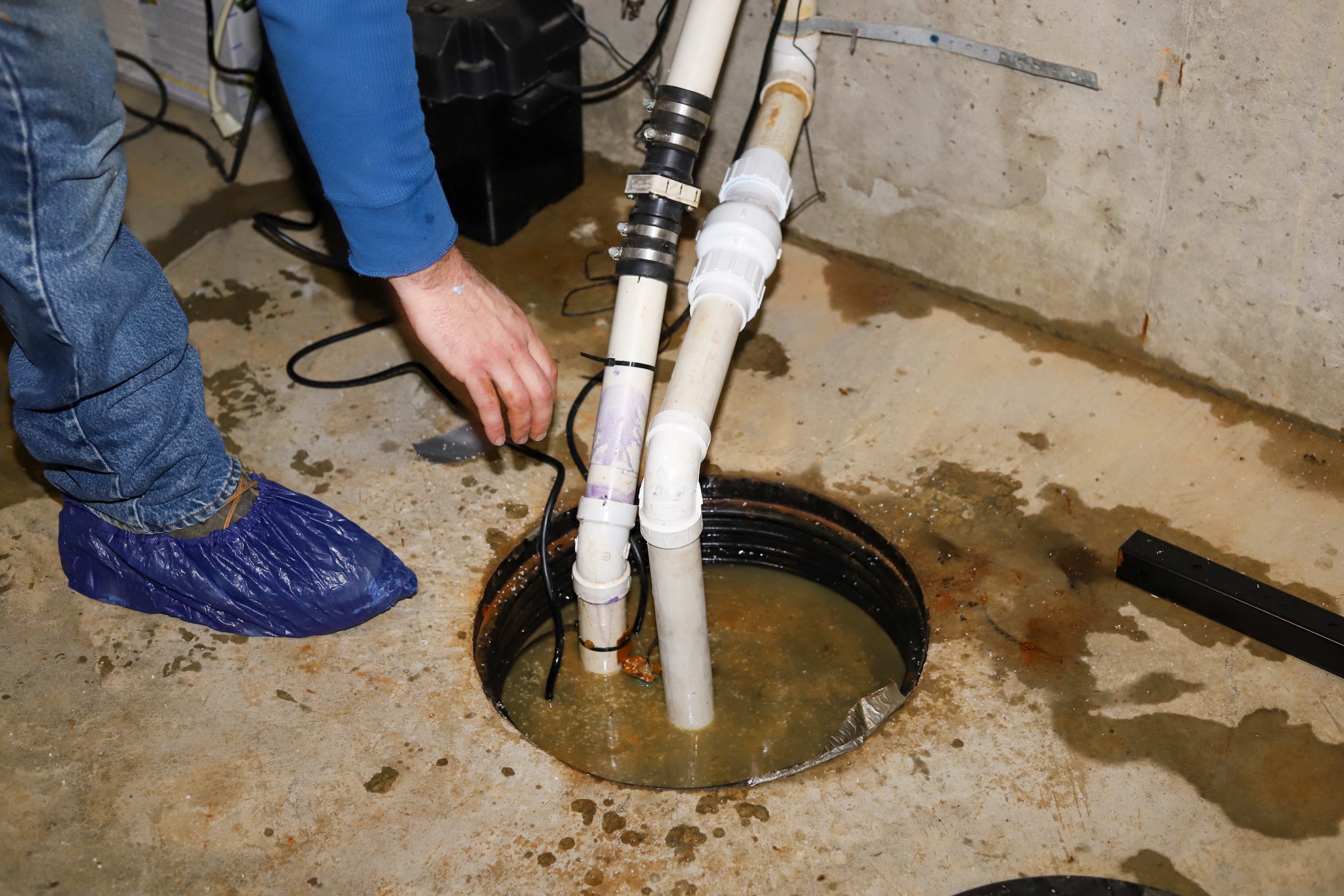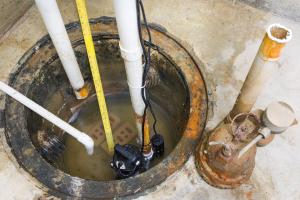Proven Solutions for Caring for a Sump Pump
Proven Solutions for Caring for a Sump Pump
Blog Article
On this page down the page you can find a good deal of exceptional additional info in regards to Keep Your Sump Pump Clean, It'll Keep You Dry.

Sump pumps are critical components in several homes, especially in areas vulnerable to flooding or too much dampness. They help stop water damage by effectively getting rid of excess water from basements or crawl spaces. Nonetheless, like any other home appliance, sump pumps require regular maintenance to guarantee they work effectively when required the most. Cleaning your sump pump is a vital part of its upkeep, and understanding how to do it properly can conserve you from costly fixings and potential disasters.
Intro
Maintaining a clean sump pump is vital for its appropriate functioning and long life. Ignoring this necessary job can cause clogs, breakdowns, and ultimately, water damage to your property. As a result, finding out exactly how to cleanse a sump pump is essential for house owners that count on these gadgets to keep their basements completely dry and protected.
Comprehending the Sump Pump
Before diving right into the cleaning process, it's essential to have a basic understanding of just how a sump pump works. Normally installed in a pit or container listed below the basement floor, a sump pump includes several vital components, including a pump, a float button, and a discharge pipeline. When water accumulates in the pit, the float switch triggers the pump, which then pumps the water out via the discharge pipeline, far from the structure's foundation.
Indications of a Dirty Sump Pump
Knowing when your sump pump needs cleansing is vital for protecting against potential malfunctions. Some typical indications that indicate a dirty sump pump include weird noises throughout procedure, lowered water circulation, and noticeable particles in the pit. If you see any one of these symptoms, it's necessary to cleanse your sump pump without delay to prevent any kind of more concerns.
Getting ready for Cleansing
Before you begin cleaning your sump pump, it's essential to take some safety and security precautions. Begin by shutting down the power to the pump to avoid any type of electric crashes. Additionally, use ideal protective gear, such as gloves and goggles, to secure yourself from dust, debris, and potential microorganisms.
Step-by-step Overview to Cleaning Up a Sump Pump
Turning off the Power
Begin by separating the power supply to the sump pump to stop any kind of crashes while cleaning.
Removing Particles and Dirt
Use a container or an inside story to eliminate any kind of visible debris, dust, or debris from the sump pit. Dispose of the debris properly to stop it from blocking the pump or the discharge pipeline.
Cleaning up the Pump and Float Change
As soon as the pit is clear of debris, meticulously remove the pump from the pit. Check the pump and the float switch for any signs of damage or wear. Utilize a soft brush or cloth to clean the surfaces and get rid of any type of built up gunk.
Flushing the System
After cleaning the pump and float switch, purge the sump pit with clean water to get rid of any type of remaining dust or debris. This will certainly help ensure that the pump operates efficiently and effectively.
Checking for Correct Functioning
Before re-installing the pump, perform a fast test to make certain that the float switch turns on the pump correctly. Pour some water right into the sump pit and observe the pump's operation. If whatever is operating properly, you can reassemble the pump and reconnect the power supply.
Maintenance Tips to Keep Your Sump Pump Clean
In addition to routine cleaning, there are numerous upkeep ideas you can follow to keep your sump pump in ideal condition:
Final thought
Cleansing your sump pump is an important facet of its maintenance and guarantees that it operates successfully when you require it one of the most. By complying with the actions outlined in this guide and including normal upkeep into your regimen, you can extend the life expectancy of your sump pump and safeguard your home from water damages.
6 STEPS ON HOW TO CLEAN A SUMP PUMP PROPERLY
UNDERSTANDING SUMP PUMPS
Your sump pump plays a crucial role in protecting your home by managing and removing excess water. It primarily functions as a “shield”, guarding your basement against the damaging effects of water accumulation. The pump is housed in a sump pit in the lowest part of your basement, and its job is to pump out any water that collects there.
During heavy rainfalls or when snow melts rapidly, water can infiltrate your basement, posing potential risks like flooding, structural damage, and harmful mold growth. Here, the sump pump springs into action, pumping out the intruding water and directing it away from your home.
SAFETY FIRST
Before cleaning, remember to prioritize safety. Disconnect the sump pump from the power source to prevent any accidental electric shocks. Also, wear sturdy gloves to protect your hands from any sharp or dirty components within the pump.
REMOVE THE SUMP PUMP
After ensuring your safety, the next step is to remove the sump pump from its pit. Doing this might require careful maneuvering as you don’t want to damage any pump components. Once removed, clean the sump pit to remove any accumulated debris or sludge.
INSPECT THE PUMP
Inspect the pump for any visible signs of wear or damage. Check the power cord, float switch, and impeller housing. If any components look worn out or damaged, consider replacing them to ensure optimal performance.
CLEAN THE PUMP
Thoroughly clean the pump with warm, soapy water. Make sure to rid it of any dirt, gravel, or other debris that might impede its performance. You can use a toothbrush to clean the small, hard-to-reach parts of the pump.
REINSTALL THE SUMP PUMP
Reinstall the pump into the sump pit Make sure it’s positioned correctly to remove the water effectively Once it’s back in place, reconnect it to the power source TEST THE PUMP
Finally, pour some water into the pit to ensure the pump works correctly. It should start automatically and begin pumping out the water; if it doesn’t, check the power source and the positioning of the pump.
Remember, while cleaning your sump pump is an essential part of home maintenance, hiring a professional plumber for a thorough inspection and cleaning at least once a year is also important. This will ensure that your pump is in optimal condition, ready to protect your home from potential water damage.
BEST PRACTICES FOR CLEANING SUMP PUMP DISCHARGE PIPES
Regular Inspection: Regularly inspect your discharge pipes, especially during heavy rainfall or snowmelt periods. Look for any signs of blockage or damage. Early detection of problems can prevent serious issues down the line. Periodic Cleaning: Over time, sediment and debris can accumulate in the discharge pipes, impeding the flow of water. Regular cleaning helps keep the pipes clear and functioning efficiently. You can use a high-pressure water jet to effectively clean the pipes. Insulation During Winter: In colder climates, discharge pipes can freeze, blocking the outflow of water. Protect your discharge pipes from freezing temperatures by insulating them with foam pipe insulation. This will ensure the sump pump can continue to discharge water even in freezing conditions. Proper Positioning: The discharge pipe should be positioned to direct water away from your home’s foundation. Improper positioning can lead to water seeping back into the basement. Ensure the pipe is long enough and angled correctly. Installation of a Check Valve: A check valve prevents water from flowing back into your sump pit after the pump has pushed it out. Installing a check valve helps maintain the efficiency of your sump pump and reduces the risk of flooding. Minimize Pipe Turns: Every curve or turn in the discharge pipe can decrease the efficiency of water flow. By minimizing turns and bends in your discharge pipe, you can increase the efficiency of your sump pump. https://www.fullspeedplumbing.com/how-to-clean-a-sump-pump-properly9999/

Do you really like reading about Steps to Cleaning Your Sump Pump Properly? Try to leave a review directly below. We will be happy to see your opinion about this entry. We hope that you come back again before long. Liked our piece? Please share it. Let somebody else find it. Thanks for your time spent reading it.
At This Website Report this page